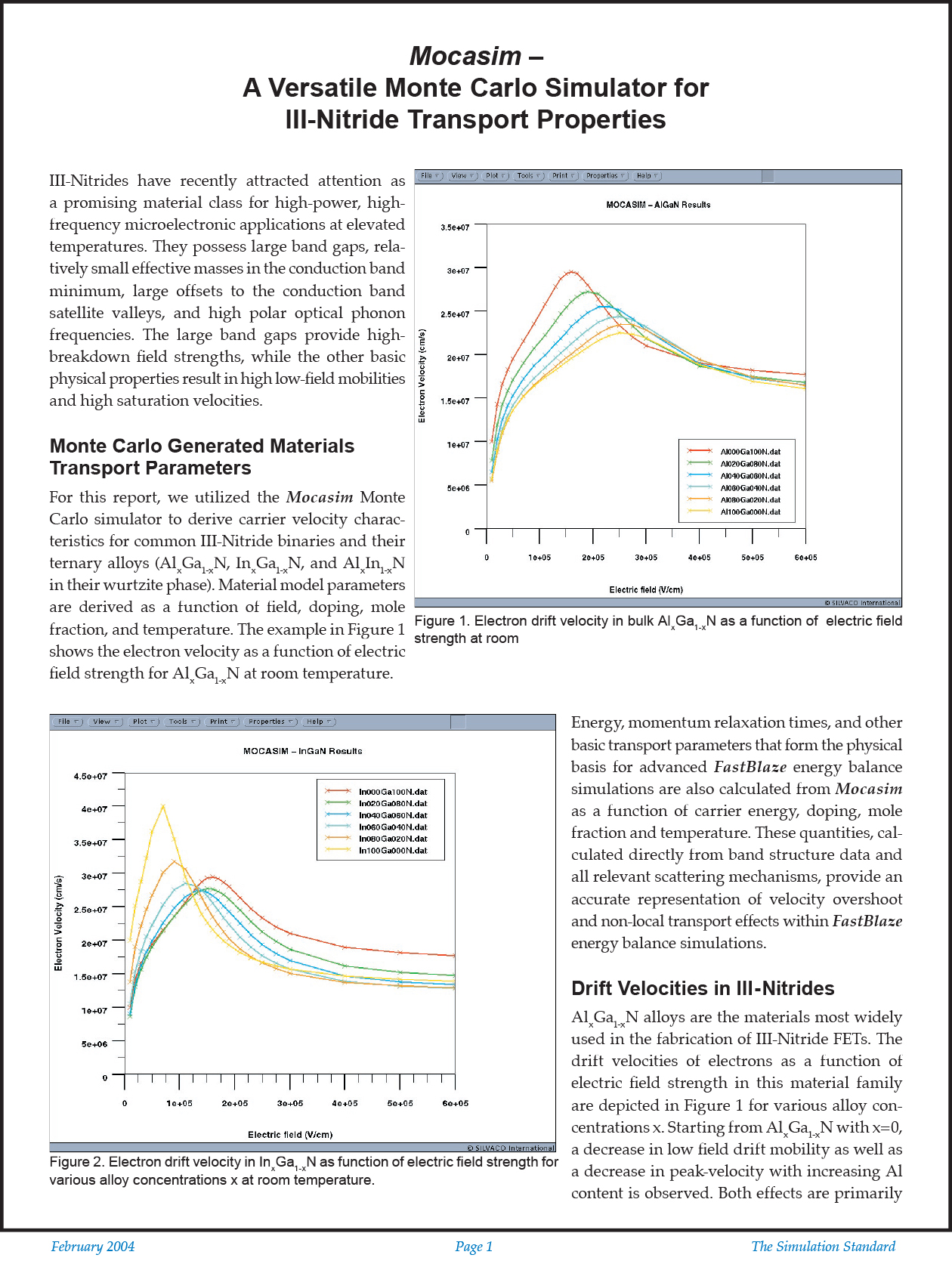Mocasim – A Versatile Monte Carlo Simulator for III-Nitride Transport Properties
III-Nitrides have recently attracted attention as a promising material class for high-power, high-frequency microelectronic applications at elevated temperatures. They possess large band gaps, relatively small effective masses in the conduction band minimum, large offsets to the conduction band satellite valleys, and high polar optical phonon frequencies. The large band gaps provide high-breakdown field strengths, while the other basic physical properties result in high low-field mobilities and high saturation velocities.
Monte Carlo Generated Materials Transport Parameters
For this report, we utilized the Mocasim Monte Carlo simulator to derive carrier velocity characteristics for common III-Nitride binaries and their ternary alloys (AlxGa1-xN, InxGa1-xN, and AlxIn1-xN in their wurtzite phase). Material model parameters are derived as a function of field, doping, mole fraction, and temperature. The example in Figure 1 shows the electron velocity as a function of electric field strength for AlxGa1-xN at room temperature.
Energy, momentum relaxation times, and other basic transport parameters that form the physical basis for advanced FastBlaze energy balance simulations are also calculated from Mocasim as a function of carrier energy, doping, mole fraction and temperature. These quantities, calculated directly from band structure data and all relevant scattering mechanisms, provide an accurate representation of velocity overshoot and non-local transport effects within FastBlaze energy balance simulations.
Drift Velocities in III-Nitrides
AlxGa1-xN alloys are the materials most widely used in the fabrication of III-Nitride FETs. The drift velocities of electrons as a function of electric field strength in this material family are depicted in Figure 1 for various alloy concentrations x. Starting from AlxGa1-xN with x=0, a decrease in low field drift mobility as well as a decrease in peak-velocity with increasing Al content is observed. Both effects are primarily a direct consequence of the increasing effective mass of the central valley. The saturation drift velocities, on the other hand, remain nearly constant over the entire range from one binary to the other.



